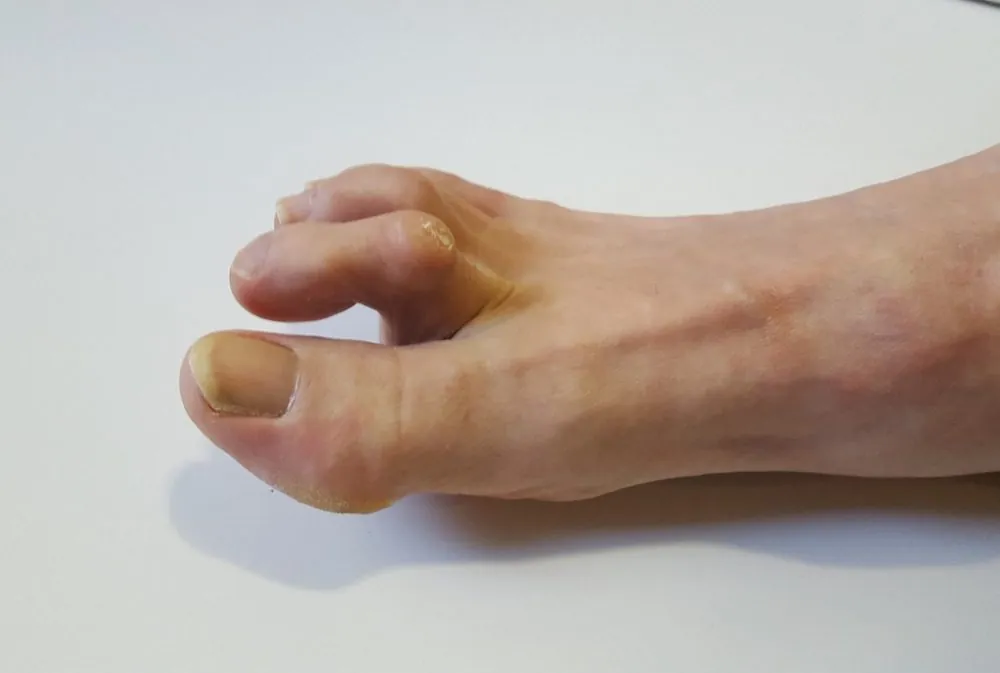Do you ever feel pain in your toes? Are you afraid the contracture will get progressively worse? If you answered yes, you may be suffering from hammer toe.
Hammer toes, claw toe or mallet toe are characterized by a contracture of the toe. The curvature of the affected toes gives the impression that your toes take the shape of an inverted V or hook. However, it is a problem that can be corrected.
Hammer toes, claw toe, mallet toe: what is the difference?
A very large number of men and women suffer from hammer toes. This deformation of the toes can be divided into 3 categories. In addition to hammer toes, we find claw toe and mallet toe.
- Hammer toes: of the three occurrences, this is usually the most problematic contracture. The top of the toe’s joint is pushed upwards and rubs against the top of the shoe, causing pain. Wearing shoes then becomes increasingly uncomfortable and walking is very painful. A podiatrist can help you correct the problem with small silicone orthoses designed for your toes. Sometimes, surgery should be considered.
- Claw toe: this is the second most common contracture of the toes. This deformity usually does not cause pain on the top of the toes, but can create corns at the tips, which can be very painful. Your podiatrist can also help you correct claw toe by using small, custom-made silicone orthoses for your toes. In some cases, surgery may be necessary.
- Mallet toe: this is a less common problem. Only the toenail changes shape and a small corn can develop. Pain is usually moderate and surgery is rarely required.
Symptoms
Individuals who suffer from hammer toes may experience different symptoms, depending on the severity of their condition. In addition to the aesthetic problem, here are some problems they have to deal with.
Hammer toes and claw toe:
- Pain in the affected toe
- Formation of corns that may cause irritation
- Risk of dislocation, if the deformation has existed for a long time
- Reduced mobility or pain during movement of the toe
- Twinges in the forefoot
Mallet toe:
- Nail deformation
- Occasional formation of a small corn
- Irritation in the affected toe joint
However, in the majority of cases, surgery will not be necessary to relieve your symptoms.
Causes
Many things cause hammer toes, claw toe or mallet toe. Among these, inadequate footwear is common. Here are the main factors that can cause these problems.
- Improper footwear: high heel shoes or shoes that do not fit your feet correctly (too tight, lack of support, etc.) can cause a deformation of your toes.
- Hereditary factors: some people have a genetic predisposition to this type of foot problem.
- Hollow foot and flat foot
- Hallux valgus (bunions)
- Traumatism of muscles or nerves in the leg or foot
Prevention of hammer toes
There are ways to prevent hammer toes or slow their development. To succeed, it is important to carefully select the proper shoes.
A good shoe should provide sufficient space for your toes, and also provide good support for the arch of your foot.
If you are unsure, see your podiatrist. He/she will give you excellent advice.
Podiatry treatment
There are several treatments that can help alleviate the pain caused by hammer toes. This is why you should not hesitate to make an appointment with a podiatrist to learn about the right treatment.
- Orthodontic orthoplasty (orthoplasty): these are custom-made, durable silicone orthoses to be inserted at the toes to reduce deformation. They eliminate shoe friction that causes pain to the toes in various ways.
- Toe splint: some toe splints that are not custom made can be suitable for your condition: your podiatrist can help you select the best model for you.
- Footwear devices: these can help provide your feet good muscle balance and prevent the aggravation of certain symptoms.
- Cortisone injections: this treatment is used as a last resort to relieve joint symptoms.
- Podiatric surgery: in some more severe cases, the podiatrist will advise surgery to correct the problem permanently.

